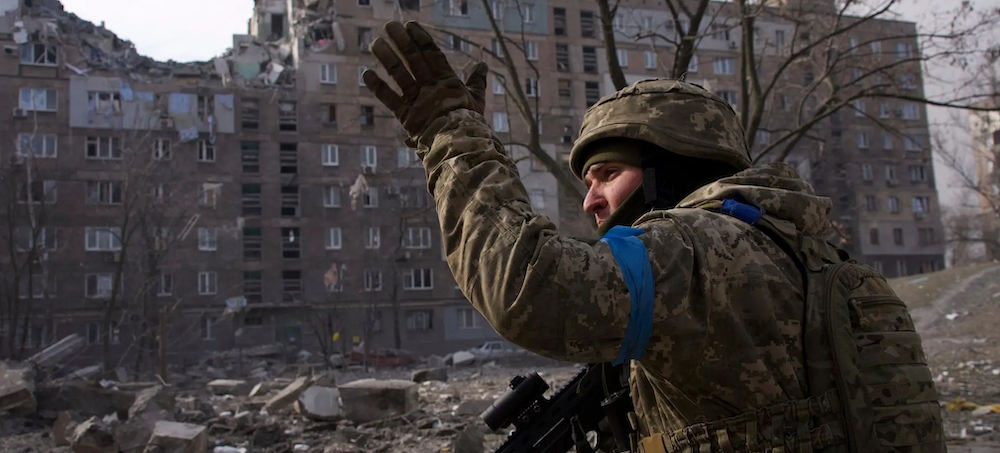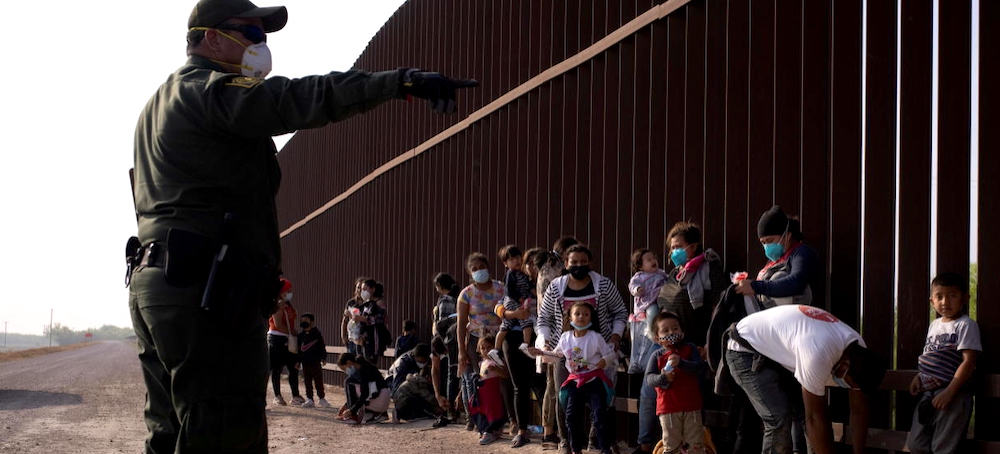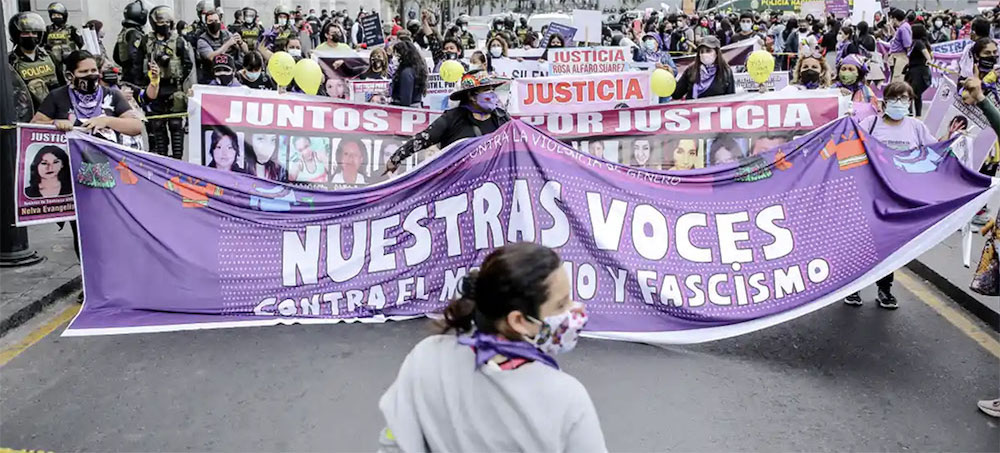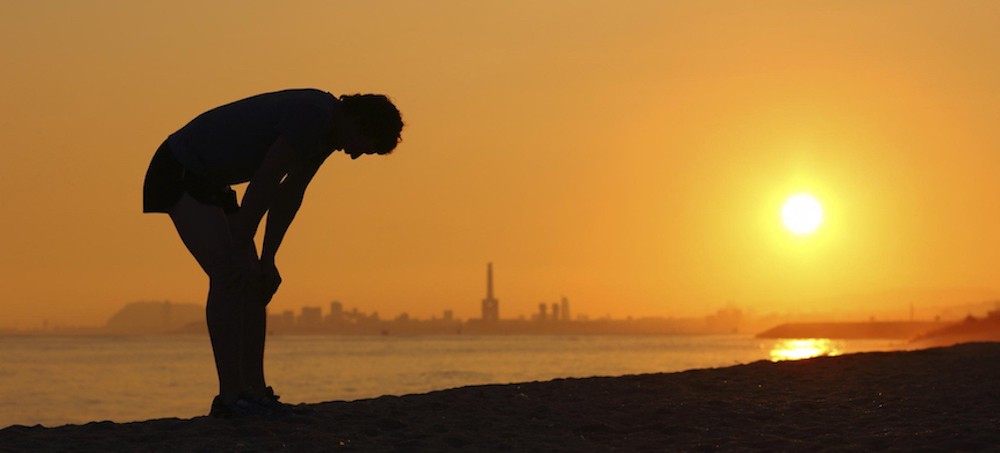Small Donors Rallying for RSN, Need Some Matching Funds!
Got a nice burst of very small donations last night and this morning. We could really use a few larger ones to get the progress bar moving again.
Could that be you?
Marc Ash
Founder, Reader Supported News
If you would prefer to send a check:
Reader Supported News
PO Box 2043 / Citrus Heights, CA 95611
Follow us on facebook and twitter!
Live on the homepage now!
Reader Supported News
Thoughts. Prayers. Rinse. Repeat.
We are shocked. We are saddened. We are horrified.
Or are we?
Because there are two different we’s here. There’s We Americans, and as such we are indeed shocked and saddened and horrified that this could happen in our free and progressive country.
Then there’s We Targets. We who often are the victims of personal or political violence. We who are targets of the mentally ill, the sexually frustrated, the politically inadequate, the emotionally stunted. We who are marginalized based on gender, race, religion, ethnicity, or sexual orientation.
Why us? Because we are the visibly vulnerable whose basic constitutional rights are under daily attack by politicians and pundits rabble-rousing for votes or money or both. All this finger-pointing and fear-fanning sends the conscious and subconscious message that because we are more vulnerable we are also less valuable. If our rights are disposable, why wouldn’t we be?
“We” are not shocked. Not at all. It’s not like we didn’t see it coming. Again.
What we are is frustrated. We are outraged. We are betrayed. We are weary.
We are used to it, but not complacent about it.
Violence against women, Asians, Muslims, Jews, LGBTQ+, and immigrants has risen in the U.S. the past few years. That display of public hatred has emboldened Republican lawmakers to systematically go after not the perpetuators of violence, but the targeted groups. Whether it’s banning Critical Race Theory (the mythological monsters squatting under desks at our schools), banning discussion of LGBTQ+ issues, or banning abortion, they are happy to jump on the bandwagon to belittle and disrespect all these groups. We’re already Targets. Not much effort for some to take the next step to murder.
Now, we can blame the violence on the mental health issues, but the mentally ill are still being nudged toward acquiring targets to express their illness. Enter the likes of Fox News’ most popular Tucker Carlson and his promotion of the Great Replacement Theory, which the Buffalo gunman extolled in his manifesto. GRT warns that immigrants of color are being brought into the US to add to the rosters of the Democratic Party to overpower Whites at the voting booth. It also stokes the fear that People of Color will mix so much with Whites that Whites will be bred out of existence. Though after the Buffalo shooting Carlson tried to back-pedal, this video compilation that you can watch below shows the many times he pushed GRT.
According to The New York Times, Carlson has broadcast the theory that liberals are encouraging immigration in order to dominate the electorate in more than 400 episodes of his show since 2016.
I’m not saying censor Carlson or Fox or that they are responsible for the shootings. But neither are their hands completely clean. They have proven over the years that profit is their god and they will make no apologies or take any responsibilities for the deadly consequences. Remember how much they mocked vaccines and masks and shutdowns, even as COVID-19 was killing off their own audience?
Still, what if Tucker Carlson and his ilk didn’t pimp the Great Replacement Theory to create a warm and fuzzy incubator to grow the twisted ideas that appeal to these killers? What if they thought, “Even though our audience loves nutjob conspiracy theories, maybe we are doing harm to our country by promoting them…Nah!” Instead, America to them is a giant ATM machine and their PIN code is SCREWU.
What lessons have we learned from the Buffalo shootings? None.
Stay tuned for the next mass shooting of people with crosshairs already on their backs.
 Summer Lee. (photo: Rebecca Droke/AP)
Summer Lee. (photo: Rebecca Droke/AP)
Friday was the fourth day of counting ballots after Tuesday's primary in the closely contested race for the open 12th District seat.
Lee, a second-term state House member, lawyer and former labor organizer, comes from the party's progressive wing. She was endorsed by Vermont Sen. Bernie Sanders, the two-time presidential candidate and a leading voice in the Democratic Party’s left wing who came to campaign for Lee.
Lee beat out second-place Steve Irwin, who was endorsed by the Allegheny County Democratic Party and backed by prominent Democrats from the county.
The seat is open because longtime Rep. Mike Doyle — first elected in 1994 — is not running again. It also has new boundaries since Pennsylvania’s congressional districts were redrawn to account for a decade of demographic changes identified by the 2020 Census.
Lee will face the Republican nominee of the same name as the outgoing Democratic incumbent — Mike Doyle — in the fall general election.
 A Ukrainian soldier guards his position in Mariupol, Ukraine. (photo: Mstyslav Chernov/AP)
A Ukrainian soldier guards his position in Mariupol, Ukraine. (photo: Mstyslav Chernov/AP)
But the invasion has not been the military success Moscow hoped, and is now deep into its second phase.
The bulk of fighting has moved to the east, after failed Russian advances in central Ukraine. The defenders are even focusing on retaking some key areas nearer the Russian border, while Moscow is seeing its troops beaten back in a few key battles.
Western aid is also flowing into Ukraine, NATO is set to be strengthened as countries seek to join, and the first Russian soldier accused of war crimes has stood trial.
Here’s what has happened in several key areas since the war began.
Donbas
After weeks of intense fighting, Ukraine’s eastern Donbas region is “completely destroyed,” Ukrainian President Volodymyr Zelensky said Thursday.
He accused Russia of a “deliberate and criminal attempt to kill as many Ukrainians as possible” after a village in Chernihiv was hit with missiles, leaving many dead.
Officials in the region say the front line is being shelled “day and night,” with Russian forces attempting to break through Ukrainian lines.
A NATO military official told CNN Wednesday that the alliance expects something of a stalemate over the next few weeks. But the official said NATO believes momentum has shifted significantly in favor of Ukraine and the debate within NATO circles is now over whether it is possible for Kyiv to retake Crimea and the Donbas territories seized by Russia and Russian-backed separatists, respectively, in 2014.
Kharkiv
Ukrainian forces have beaten back Russia’s assaults in Ukraine’s second city of Kharkiv, and advanced toward the border in several places north and east of the city.
Ukrainian officials said last week they were liberating villages on the outskirts of the city. Their advances led to the symbolic and embarrassing expulsion of the Kremlin’s forces back to their own border while posing the strategic threat of cutting Russia’s supply lines into Ukraine and its forces further south in Donbas.
Anastasia Paraskevova recently returned to her home in Kharkiv for the first time since fleeing the city two months ago. It had been under constant bombardment since then, until Russian forces were repelled.
Paraskevova said overall the experience was good. “The city was much more alive. People were walking the streets. And some shops were working. It felt like some life was back, much better than it was when I was here in March.”
Kherson
Every day, hundreds, or even thousands, of people are trying to flee the Russian-occupied region of Kherson in southern Ukraine.
The city has been under Russian control since early in the invasion. Ukrainians are leaving for many reasons: to avoid being detained or to escape the heavy-handed actions of Russian forces, or because of the chronic shortages of medicine and other basics in Kherson, which fell under Russian control soon after the invasion.
Last week, a convoy of about 1,000 vehicles tried to leave Kherson. The Russians ultimately let the convoy move in batches – but only after holding it in one place for most of the day.
Mariupol
Mariupol, a port city on the Sea of Azov, finally fell to Russian forces after weeks of relentless bombardment.
The city was the scene of some of the most intense fighting since Russia launched its invasion of Ukraine. It was there that Russia carried out deadly strikes on a maternity ward and the bombing of a theater where hundreds of civilians had sought refuge from the violence.
Mariupol became a symbol of Ukrainian resistance as its defenders held out at Azovstal, a sprawling steelworks plant where as many as 1,000 civilians had taken shelter at one point, with stocks of food and water dwindling.
Ukraine’s military announced late Monday that its forces had completed their “combat mission” at Azovstal, effectively ceding the city to Russian forces. On Friday, Ukraine ordered its forces to stop defending the plant.
Russian Defense Minister Sergei Shoigu said Friday that almost 2,000 Ukrainian soldiers have surrendered at Azovstal. CNN cannot independently verify that figure.
With the city now almost fully under Russian control, there is concern that evidence of any potential war crimes – like those allegedly committed in Bucha and Borodianka – could be lost or destroyed.
Bucha
More evidence of potential Russian war crimes is emerging in Bucha, the northern Ukrainian city near Kyiv, the capital. An investigation by The New York Times alleged that Russian paratroopers carried out summary executions of at least eight Ukrainian men in Bucha on March 4.
Evidence of mass graves and civilian executions in the towns of Bucha and Borodianka has continued to emerge since early April, following the withdrawal of Russian forces from the Kyiv region.
Images of bodies lying strewn the streets of Bucha have sparked international condemnation and fueled calls for an investigation into potential Russian war crimes.
CNN visited the scene of mass graves in Bucha in April after Russian forces had withdrawn, revealing the horrors of their occupation to the world. Correspondent Fred Pleitgen was among the first to reach a mass grave that residents dug while the place was under Russian occupation, because so many residents had been killed and longer burial ceremonies would have been too dangerous amid the shooting and shelling.
A soldier stands trial
This week saw the start of the first war crimes trial in Ukraine since the invasion began. A 21-year-old Russian soldier named Vadim Shishimarin pleaded guilty to killing an unarmed 62-year-old man.
The trial’s first day was so packed with journalists that authorities in Kyiv were forced to move to bigger venue. It has since produced several dramatic moments, including a confrontation between the soldier and the victim’s widow and testimony from Shishimarin himself.
Speaking Friday, Shishimarin acknowledged he was responsible for the killing but was “sorry and sincerely repents.”
“I was nervous the moment it happened. I didn’t want to kill. But it happened and I do not deny it,” he said.
Shishimarin’s lawyer, Viktor Ovsyannikov, argued that while his client was guilty of killing, it was not murder.
“Shishimarin was in a state of stress caused by the combat situation and the pressure from his commander. Analysis of those circumstances allows me to conclude that Shishimarin had no direct intent for the murder,” Ovsyannikov said.
Kremlin spokesman Dmitry Peskov said Wednesday that Russia has no details about Shishimarin’s case and it considers the charges “unacceptable,” “outrageous” and “staged.”
Diplomats return
Foreign diplomatic missions started coming back to life in Kyiv this week, after diplomats fled the city en masse at the beginning of the conflict.
The US flag was raised over the United States Embassy to mark the official resumption operations on Wednesday, while the Swiss Foreign Ministry said Thursday it would also reopen its embassy.
The US and France both began sending back diplomats to Kyiv in late April.
A massive aid package
US lawmakers passed a bill Thursday that will send roughly $40 billion to Ukraine to pay for military and humanitarian aid, including funding that will assist Ukrainian military and national security forces, help replenish stores of US equipment sent to Ukraine and provide public health and medical support for Ukrainian refugees.
US President Joseph Biden signed the aid package while he was in South Korea.
Nordic developments
Russia stopped sending natural gas to Finland Saturday, just days after it and Sweden applied to join NATO.
Helsinki and Stockholm had, for decades, avoided joining the alliance, but cited Moscow’s invasion as the ultimate impetus to do so now. The two countries formally handed in their applications Wednesday.
Most NATO members appear ready to support both bids, except for Turkey.
Turkish President Recep Tayyip Erdogan said Thursday that his country “will say no to Sweden’s and Finland’s entry into NATO,” citing their support for the Kurdistan Workers’ Party (PKK). The PKK seeks an independent state in Turkey and has been in an armed struggle with Ankara for decades. It has been designated a terrorist organization by Turkey, the United States and the European Union.
Some experts say Erdogan may be angling for concessions or to highlight grievances Turkey wishes to bring to the attention of the international community.
 A U.S. Border Patrol agent instructs asylum-seeking migrants as they line up along the border wall after crossing the Rio Grande river into the United States from Mexico on a raft, in Penitas, Texas. (photo: Adrees Latif/Reuters)
A U.S. Border Patrol agent instructs asylum-seeking migrants as they line up along the border wall after crossing the Rio Grande river into the United States from Mexico on a raft, in Penitas, Texas. (photo: Adrees Latif/Reuters)
That public health order, which had been set to end on Monday, allows immigration authorities to quickly expel migrants at the border without allowing them to seek asylum.
The ruling is a victory for the Republican-led states that are pushing to extend the restrictions.
More than 20 states signed on to a lawsuit brought by Arizona, Missouri and Louisiana. They argued that the Centers for Disease Control and Prevention did not go through the proper procedures to end Title 42, and should have considered the impact on state health care systems and other costs.
U.S. District Judge Robert Summerhays in Louisiana granted the preliminary injunction those states had been seeking, saying they were likely to prevail on their claim.
"Today's ruling is a significant win as Title 42 is one of the few immigration policies that is actually working," said Arizona Attorney General Mark Brnovich in a statement.
The CDC first authorized the Title 42 restrictions in March of 2020, saying they were necessary to stop the spread of COVID-19. In April of this year, the CDC said those restrictions were no longer necessary to protect public health, and moved to terminate the policy on May 23rd.
The preliminary injunction was not unexpected. Judge Summerhays had already granted a temporary restraining order in the case, and indicated that he was sympathetic to the states' arguments.
Still, immigrant advocates were disappointed.
"Title 42 and this lawsuit were never about public health but a transparent attempt to end asylum," said Lee Gelernt, an attorney with the American Civil Liberties Union, which has been challenging the legality of the public health order in a separate case.
"If the administration doesn't immediately seek to undo the injunction, it will say a lot about whether the White House truly wants Title 42 to end," Gelernt said.
The Department of Justice says it intends to appeal the ruling.
"CDC has now determined, in its expert opinion, that continued reliance on this authority is no longer warranted in light of the current public-health circumstances," said Justice Department spokesman Anthony Coley in a statement. "That decision was a lawful exercise of CDC's authority."
The injunction leaves tens of thousands of migrants in limbo in cities and towns south of the U.S.-Mexico border.
"Title 42 has had a catastrophic effect on asylum seekers," said Sameera Hafiz, the policy director with the Immigrant Legal Resource Center.
"Border officials have the ability to employ measures recommended by public health experts to keep asylum seekers safe as they seek refuge in the U.S. There is no excuse for the continuation of Title 42, other than allowing the anti-immigrant playbook to continue," Hafiz said in a statement.
The Department of Homeland Security has been preparing for a possible influx of migrants when Title 42 ends. Earlier this week, Homeland Security Secretary Alejandro Mayorkas met with border patrol agents in the Rio Grande Valley, and pledged to scale up the enforcement of normal U.S. immigration laws when Title 42 is lifted.
"We will be increasing the number of criminal prosecutions to meet the challenge," Mayorkas said during a press conference on Tuesday.
Since it was put in place by the Trump administration, Title 42 has sharply limited the number of migrants who can seek asylum at the southern border. But migrants who are quickly expelled under the policy are also shielded from criminal prosecution. Mayorkas and other administration officials argue that restoring those consequences will help to deter migrants from crossing repeatedly, and drive border numbers down.
The Biden administration has faced bipartisan criticism for moving to end Title 42 at a time when border apprehensions are near record levels.
Immigration authorities encountered migrants at the southern border more than 234,000 times in April, according to U.S. Customs and Border Protection. That's one of the highest totals ever recorded, although tens of thousands of migrants crossed multiple times and were counted more than once in the total.
The April total also includes more than 20,000 Ukrainians fleeing from the war in their country, who crossed into the U.S. at the southern border before the launch of a new program intended to bring Ukrainians directly from Europe.
The number of apprehensions made by Border Patrol last month actually declined slightly compared to March, to just over 200,000. But that is still one of the largest monthly totals on record.
 A worker at an Amazon warehouse. (photo: Helen H. Richardson/Getty Images)
A worker at an Amazon warehouse. (photo: Helen H. Richardson/Getty Images)
Amazon has released a laughable statement denying what’s been obvious since the company’s founding: that it, like many other US companies, actively and systematically violates international labor standards prohibiting anti-union interference in workers’ business.
The human-rights policy opens by affirming that “Amazon employees are the foundation of our success as a company, and we are committed to respecting the fundamental human rights and the dignity of workers everywhere we operate around the world.” The company notes that the International Labor Organization (ILO) and United Nations recognize workers’ right to freedom of association and collective bargaining. “We respect and support these standards,” the statement reads.
While anyone who has followed the company’s union busting as of late knows that is untrue, a new report from the UC Berkeley Labor Center details the extent of the problem. Titled Failure to Deliver: Assessing Amazon’s Freedom of Association Policy under International Labor Standards, the report details Amazon’s violations of the international standards to which the company has now pledged allegiance.
As Lance Compa, the report’s author, notes, a key foundation of such international standards is the principle of noninterference in workers’ organizing.
“The principle of non-interference was articulated as long ago as 1949, shortly after the ILO adopted Conventions 87 and 98 on freedom of association, organizing, and collective bargaining,” writes Compa:
The ILO said at that time that Convention 87’s Article 11 “lays down an obligation for the State to take measures to prevent any interference with such rights without qualification, that is, interference by individuals, by organizations or by public authorities.”
While the United States has not ratified ILO Conventions 87 and 98, the ILO “has determined that ILO member countries are ‘bound to respect a certain number of general rules which have been established for the common good. . . . Among these principles, freedom of association has become a customary rule above the Conventions.’” The United States has accepted “this rule and jurisdiction of the Committee on Freedom of Association in complaints filed against it under these conventions.”
Examples of what the committee has deemed employer interference in workers’ organizing and bargaining rights include: imposing pressure, instilling fear, and making threats of any kind that undermine workers’ right to freedom of association; harassing and intimidating workers by reason of trade union membership or legitimate union activities; and dismissing a worker by reason of union membership or legitimate union activities, including by invoking “neglect of duty” [or other employer rules] when the real motive for dismissal is a worker’s trade union activities.
Amazon has not only engaged in all of those activities in the past; it was engaged in them when it published its freedom-of-association policy statement and continues to engage in them now.
As Compa notes, US labor law has long been interpreted as allowing employers to behave in such ways, which is why the United States hasn’t ratified the ILO Conventions. As the US Council for International Business, the US employer representative at the ILO, once explained:
ILO core conventions [87 and 98] have been found to directly conflict with US law and practice. . . . US ratification of the conventions would prohibit all acts of employer and union interference in organizing, which would eliminate employers’ rights under the NLRA to oppose unions.
But if Amazon insists that it is not only following US labor law but international standards, US ratification is irrelevant. It is no wonder that Amazon’s policy makes no reference to the details of ILO standards: it is without question noncompliant. (It is also noncompliant with the far more lenient standards of US labor law, as it has just been sued by the National Labor Relations Board and was found to have broken the law during the union election in Bessemer, Alabama; it is also currently facing dozens of new unfair labor practice charges by workers at a number of facilities.)
Further, Amazon operates internationally. The company’s policy statement states that many European countries have works councils, and that “Amazon is in the process of establishing a European Works Council (EWC),” as is required of firms with at least one thousand workers in two or more European Union countries.
“In countries with legal requirements for works councils, Amazon has a long record of first resisting formation of works councils, then dealing with them as grudgingly as possible,” writes Compa, citing extensive research by journalists Jörn Boewe and Johannes Schulten. Further, Compa notes that Amazon met the EWC threshold more than twenty years ago, making its assertion that it is only now establishing an EWC more damning than exculpatory.
Throughout Amazon’s policy statement is an emphasis on what the company calls “direct employee participation in the workplace,” by which it means “employees and management have direct interactions.” Such direct forms of “freedom of association” — here the twisting of what that concept refers to becomes outright absurd, as Amazon means employees are not unionized in any capacity but simply interacting with their bosses — include associate forums, all-hands meetings, and Amazon’s “Voice of the Associates Board.” Amazon’s statement insists that these paths provide workers with plenty of options for remedying complaints and that “any employee can go directly to Human Resources, the Legal Department, or any manager with a suggestion, concern, feedback or complaint.”
“Amazon’s idiosyncratic formulation of ‘direct’ and ‘indirect’ employee participation in the workplace is simply not part of international labor rights discourse,” writes Compa. None of this has any resemblance to ILO or UN standards for freedom of association or collective bargaining. If Amazon is to respect such standards rather than use its policy as a shield against criticism, Compa recommends the company go back to the drawing board, enshrining the principle of noninterference into its policy.
In Compa’s estimation, that would mean, at a minimum, the following:
- Not hiring anti-union consultants to wage campaigns against workers’ organizing efforts;
- Not forcing workers into anti-union captive-audience meetings;
- Not creating anti-union websites or using company communication systems to convey anti-union messages;
- Not disparaging, deriding, or imputing corrupt motives to unions or union representatives;
- Not telling workers that they could lose pay and benefits if they form a union; and
- Not telling workers management will replace them if they exercise the right to strike.
 'In Argentina, there are multiple reasons behind the expansion of the green tide and the demand for legal abortion from below.' (photo: EPA)
'In Argentina, there are multiple reasons behind the expansion of the green tide and the demand for legal abortion from below.' (photo: EPA)
Argentina, Colombia, and Mexico have legalized or decriminalized abortion. Could Chile be next?
Yet in February, Colombia’s constitutional court removed abortion (up to 24 weeks) from the criminal code in response to a court case brought by Causa Justa—the spearhead of a wide-ranging social and legal campaign of more than 120 groups and thousands of activists.
Colombia is now “at the forefront of the region and the world,” according to doctor and feminist activist Ana Cristina González, a spokesperson for Causa Justa.
The campaign, launched in February 2020, “was the result of political build-up, national and internationally” that changed “the public debate on abortion in Colombia” and became a “collective and articulated movement,” González explained at a meeting in Montevideo, Uruguay.
Abortion was banned completely in Colombia until 2006, when an initial constitutional court ruling—prompted by several of today’s Causa Justa activists—decriminalized terminations on three grounds: if the life or health of the woman was at risk; in cases of severe fetal abnormality; and if the pregnancy was the result of rape.
A similar breeze was blowing in Uruguay in 2012, when the country legalized abortion up to 12 weeks. And again in 2020, when Argentina’s parliament passed a law to allow abortion up to 14 weeks, after a decades-long struggle. The green tide, named after the green scarves worn by campaigners for legal, safe and free abortion, inspired and energized the whole region.
Advances in Chile and Mexico
Latin America continues to push the limits of what is possible. Barely a month after the Colombian ruling, Chile’s constitutional convention—which is drafting a new constitution for the country—passed (by a large majority) an article enshrining sexual and reproductive rights as fundamental and guaranteed by the state. These rights include abortion on demand.
The article establishes that “all people are holders of sexual and reproductive rights [including] the right to decide freely, autonomously and in an informed way about their bodies, the exercise of sexuality, reproduction, pleasure, and contraception.”
In addition, the state will guarantee the exercise of these rights “without discrimination, with a focus on gender, inclusion and cultural relevance,” and “assuring all women and persons with the capacity to gestate, the conditions for pregnancy, for voluntary termination of pregnancy, and for protected and voluntary childbirth and maternity.”
Abortion was banned in Chile in all instances during Augusto Pinochet’s dictatorship and only permitted in 2017 in cases of rape, fetal inviability, and risk to the woman's life. The public will vote on the new constitution in September; if approved, it will become the first country in the world to give constitutional status to the right to abortion.
Last year, Mexico’s supreme court ruled the criminalization of abortion unconstitutional, and invalidated a federal law that allowed health personnel to refuse to perform terminations on the grounds of “conscientious objection.”
This ruling means no woman can be imprisoned for ending her pregnancy, sets jurisprudence, and puts pressure on states to legalize abortion.
In fact, seven Mexican states have already legalized voluntary abortion up to 12 weeks, five of them in the last 18 months: Mexico City (2007), Oaxaca (2019), Veracruz, Hidalgo, Baja California, Colima (2021), and Sinaloa (2022).
Today, 37 percent of Latin America and the Caribbean’s population of 652 million live in countries where women have won rights to legal abortion or are no longer imprisoned for terminating a pregnancy (including Cuba, Guyana, and Puerto Rico). Five years ago, it was less than 3 percent.
None of this would have been possible without feminist activism, networks and demonstrations, and public conversations about the autonomy of women.
In addition, thanks to feminist innovation and advances in medicine, the mortality rate from illegal abortions has been falling consistently. Between 2005 and 2012, the number of treatments for complications due to unsafe abortions fell by a third, according to the Guttmacher Institute, which also says that the use of the drug misoprostol “became more common throughout the region” and “appears to have increased the safety of clandestine abortions.”
Feminist innovation? It was Latin American feminists who first learned, in the early 1990s, that misoprostol was effective and safe for terminating pregnancies. Today, this drug is recommended by the World Health Organization and approved by health authorities in many countries.
They also launched a global day of action—now International Safe Abortion Day—a day of struggle that is observed around the world on September 28.
But There’s More to Do
However, despite these significant advances, millions still live in a horrendous reality. Abortion is completely banned in the Dominican Republic, El Salvador, Haiti, Honduras, Nicaragua, and Suriname. In El Salvador, women can face up to 50 years in prison if they have a miscarriage or a stillbirth.
In Belize, Bolivia, Brazil, Costa Rica, Ecuador, Guatemala, Panama, Paraguay, Peru, and Venezuela, abortion is allowed in limited circumstances—most commonly when the health or life of the woman is at risk. Belize and Bolivia also take into account financial and family hardship and, along with Brazil and Panama, rape and severe fetal abnormalities.
Raped girls and women are forced to give birth in the countries with total abortion bans, but also in Costa Rica, Guatemala, Paraguay, Peru, and Venezuela. In Ecuador, where the parliament recently approved abortion in cases of rape, the president Guillermo Lasso just partially vetoed the bill.
There seems little hope of any change to abortion restrictions in Central America, but the next big win could come in the region’s most populous country, Brazil, with its 212 million inhabitants.
Abortion is only permitted in cases of rape, fetal anencephaly (a severe brain and skull defect), or if the women’s health is at risk, and the practice is hampered by the far-right government of Jair Bolsonaro, which mobilizes groups of fanatics to harass women and health personnel. But Brazil has elections this October, and the current frontrunner, former president Luiz Inácio Lula da Silva, recently said he would be in favor of legalizing abortion.
As Causa Justa’s González said, there’s no full democracy when half of the population has no right to decide about their bodies and their lives—and criminalizing abortion does exactly that.
This is, in short, a battle for freedom and full-blown democracy.
On the other side of this battle, there are powerful and coordinated attempts to roll back hard-won sexual and reproductive rights, not just in the Latin American region but across the world. This backlash includes well-funded, international networks to misinform and manipulate women and to promote unproven and potentially dangerous practices, including a “treatment” to “reverse” medical abortions—both revealed by openDemocracy investigations.
There are also armies of lawyers trained and paid for by international conservative groups to litigate or lobby against women’s rights. Those are the groups that drew up a carefully drafted agenda to end the constitutional right to abortion in the United States.
It looks increasingly likely that the anti-abortion movement will succeed there, forcing U.S. women into a frightening world of backwardness, persecution, and unsafe, clandestine abortions—a world that their Latin American sisters have experienced for decades.
But, at the moment at least, in Latin America the anti-abortionists are losing. And we are winning.
 From June to August, unusually hot temperatures are expected across all 50 states. (photo: NOAA)
From June to August, unusually hot temperatures are expected across all 50 states. (photo: NOAA)
NOAA expects unusually hot temperatures across all 50 states.
From June to August, unusually hot temperatures are expected across all 50 states, particularly the Southwest and Northeast. Much of the country is also expected to have a dry summer.
“Typically La Niña favors warmer than normal conditions over much of the West,” said NOAA meteorologist Johnna Infanti, referring to the climate pattern currently influencing weather in the U.S. It involves cooler sea surface temperatures and strong east-to-west winds in the Pacific Ocean, and it affects weather around the globe.
NOAA’s forecast offers little relief to the West, an area gripped by a 22-year-long megadrought, estimated to be the worst in 1,200 years. Scientists noted that California just had its driest January to April on record, with 3.25 inches of rain. That same period was the third-driest yet for Nevada and Utah. While forecasters expect these conditions to persist, the drought also appears poised to crawl east, with most of Iowa and eastern Texas likely to develop drought conditions this summer.
Extended drought has states worried, since it ratchets up their wildfire risk. Fires have already scorched New Mexico this month, weeks before the fire season peaks in June. Scott Overpeck, a meteorologist for the National Weather Service in Albuquerque, told the Guardian, “We have been seeing the writing on the wall, in the sense that we know with the drought conditions that it is going to be a rough season.”
Prospects for a hot, dry summer also have the people who operate electric grids concerned. This week, the North American Electric Reliability Corp., known as NERC, which monitors the grid across the U.S. and Canada, issued a sober assessment for the season, underscoring the challenges of keeping the power running against the backdrop of extreme weather driven by climate change. As temperatures spike, demand for electricity soars as people turn on their air conditioning. But with drought crippling hydropower generation, there’s less available power to meet demand.
That means an unreliable grid. When there isn’t enough power, operators set off outages, rolling blackouts, to avoid long-term damage to the grid. About two-thirds of the U.S. is vulnerable to a shaky supply this summer, according to the NERC assessment. During extreme events, like the Pacific Northwest’s heat wave last year, when temperatures set new records for three days straight, that can be lethal. Washington state alone estimates that 100 people died from the heat wave alone last summer, making it the deadliest weather-related event in state history.
The highest risks are in the upper Midwest and southern states directly east of the Mississippi River. There, NERC’s report said, retiring power plants, climbing demand, and low winds strain the power supply. Plus, an important transmission line running from Illinois to Arkansas that was damaged by a tornado last December is still out of service. Elsewhere, drought in Missouri River Basin states hampers the gas, coal, and nuclear plants that use river water to stay cool.
The East Coast will likely get an early taste of summer heat this weekend: A heat wave bringing the hottest temperatures since last August is expected to bake states from North Carolina to Maine. If that’s not enough to worry about, the grid watchdog identified two more hurdles this summer: supply chain woes that slow major transmission projects and the possibility of Russian cyberattacks.
Special Coverage: Ukraine, A Historic Resistance
READ MORE
Follow us on facebook and twitter!
PO Box 2043 / Citrus Heights, CA 95611




No comments:
Post a Comment
Note: Only a member of this blog may post a comment.